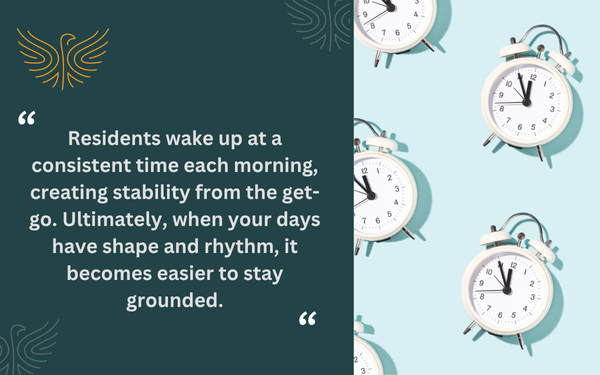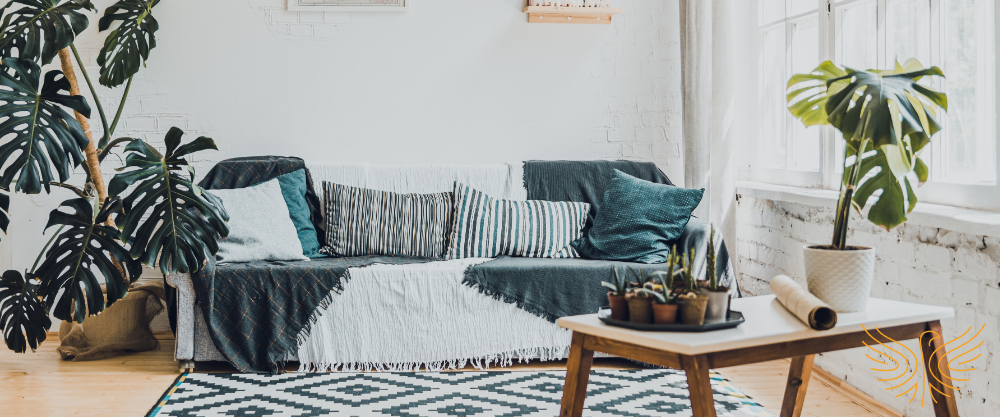Recovery is about so much more than putting down the bottle or walking away from substances. It’s about waking up each morning and choosing yourself again. It’s about learning to trust your own decisions, rebuilding relationships that matter, and rediscovering what it means to live with purpose and hope.
For many people in early recovery, the transition from treatment back to everyday life can feel disorienting and overwhelming. But this is where sober living houses can help.
These homes offer a vital bridge—a safe, structured environment that sits between the intensity of residential treatment and the independence of living on your own. They provide time; time to practice new habits, strengthen your commitment to sobriety, and surround yourself with others who truly understand what you’re going through.
So, what does a typical day actually look like inside a sober living house?
_______________________________________________________
Mornings Are About Building Structure and Intentionality
The day begins with routine, setting the stage for real and lasting healing to take place. Residents wake up at a consistent time each morning, creating stability from the get-go. Ultimately, when your days have shape and rhythm, it becomes easier to stay grounded.

A typical morning might include:
- Waking at a consistent time and completing personal hygiene routines
- Preparing and sharing a healthy breakfast with housemates
- Completing assigned chores like tidying common areas, taking out trash, or washing dishes
- Participating in a house meeting or morning check-in to set intentions for the day
- Brief meditation, prayer, or mindfulness practices
- Reviewing daily schedules and accountability commitments
These small acts of contribution remind residents they’re part of something larger than themselves. There’s dignity in showing up for your housemates, in keeping your commitments even when they’re small.
Many sober living homes incorporate morning check-ins or group reflections. Residents might gather around the kitchen table to share their feelings, set intentions for the day ahead, or simply offer words of encouragement to one another. And these moments create connection before the day pulls everyone in different directions. They also provide gentle accountability—when you know people will be checking in tomorrow morning, it’s easier to make good choices today.
_______________________________________________________
Afternoon Activities
As the day unfolds, residents head out into the world. Some go to work. Others attend classes or job training programs. Many participate in outpatient treatment, continuing therapy, or counseling sessions that support their recovery journey. The afternoons are often about reengagement—reconnecting with responsibilities, goals, and the person you’re becoming.
Afternoon activities often include:
- Attending work, school, or vocational training programs
- Participating in outpatient therapy or counseling sessions
- Going to 12-step meetings (AA, NA, SMART Recovery, etc.)
- Meeting with sponsors or accountability partners
- Attending medical or psychiatric appointments
- Grocery shopping and meal planning for the house
- Managing personal finances and budgeting
- Completing job applications or resume building
- Exercising at the gym or engaging in physical activity
- Attending life skills workshops or classes
This is where sober living differs from more intensive treatment settings. Residents aren’t isolated from daily life; they’re actively practicing how to navigate it. They’re learning to balance a job and recovery meetings. They’re managing money, preparing meals, keeping appointments, and handling the inevitable stresses that come with being human—all while staying sober.
Inside the house, personal responsibilities continue. Residents take turns cooking dinner, managing household budgets, and keeping shared spaces clean. These might seem like mundane tasks, but they’re actually life skills that addiction often erodes. Relearning how to plan a grocery list, stick to a cleaning schedule, or save money for something meaningful—these are acts of self-respect and autonomy.
_______________________________________________________
Evenings for Community and Reflection
Evenings at the house bring everyone back together. Shared meals create space for connection and remind residents they belong. After dinner, activities vary, offering both structure and relaxation, and may include:
- Preparing and sharing dinner together
- Attending recovery meetings (in-house or community)
- Group therapy or process groups
- Recreational activities like games, movies, or sports
- Workshops on relapse prevention or coping skills
- Yoga, meditation, or mindfulness practice
- Walks or time outdoors with housemates
- Personal development, reading, or journaling
- One-on-one conversations with peers or mentors
- Quiet time for family calls or reflection
Evenings balance community with introspection. Some houses host workshops or outings to demonstrate that sobriety can include joy and connection. Others emphasize journaling, meditation, or quiet time before bed. However the day ends, there’s a shared sense of safety and empathy—residents know they’re supported by people who truly understand.
At Freedom Recovery Centers (FRC), we’re here to help you on the right path. If you’re curious to learn more about recovery and sober living houses, reach out to us today. Our team is ready to answer your call 24/7 at 804-635-3746.
.svg)






.svg)

.svg)



.svg)
